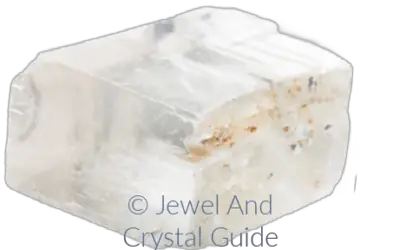While there are no distinct “types” of Tiger’s Eye, there are different colors and variations, with some gemstones containing tiger’s eye and a mix of other minerals.
I’ll be focusing on colors today. We’ll take a look at all the colors you get, what names they’re called, where they’re from, and what they’re good for.
So keep reading to find out more…
In this blog post, you’ll get:
- A list of 5 colors of tiger’s eye and each one’s characteristics
- A discussion whether cat’s eye is a type of tiger’s eye or not
Types of tiger’s eye
5 types of tiger’s eye are:
Tiger’s eye
Quartz that’s sold as tiger’s eye is the most common variety of this crystal.
It has a golden-brown color and distinctive chatoyant effect, which makes the crystal shine like light reflecting off a cat’s eyes at night.
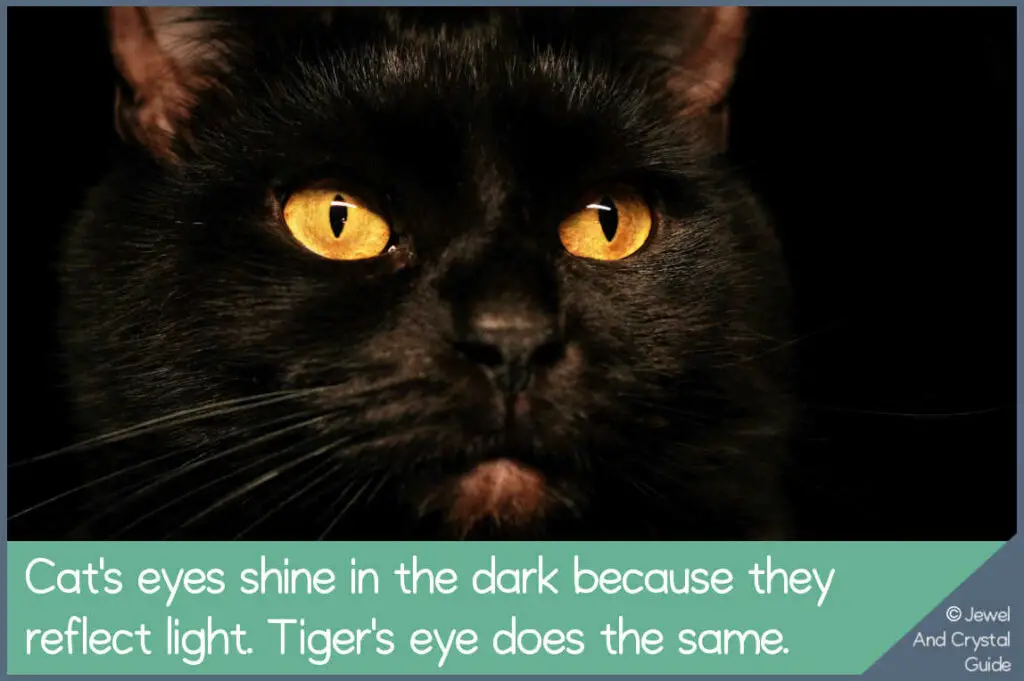
Tiger’s eye is also called tiger eye, golden tiger’s eye, yellow tiger’s eye, tiger’s eye quartz, quartz cat’s eye (see the end of this post for an explanation), pseudocrocidolite, and crocidolite quartz. The names may be different but the crystals are the same with golden-brown shades.
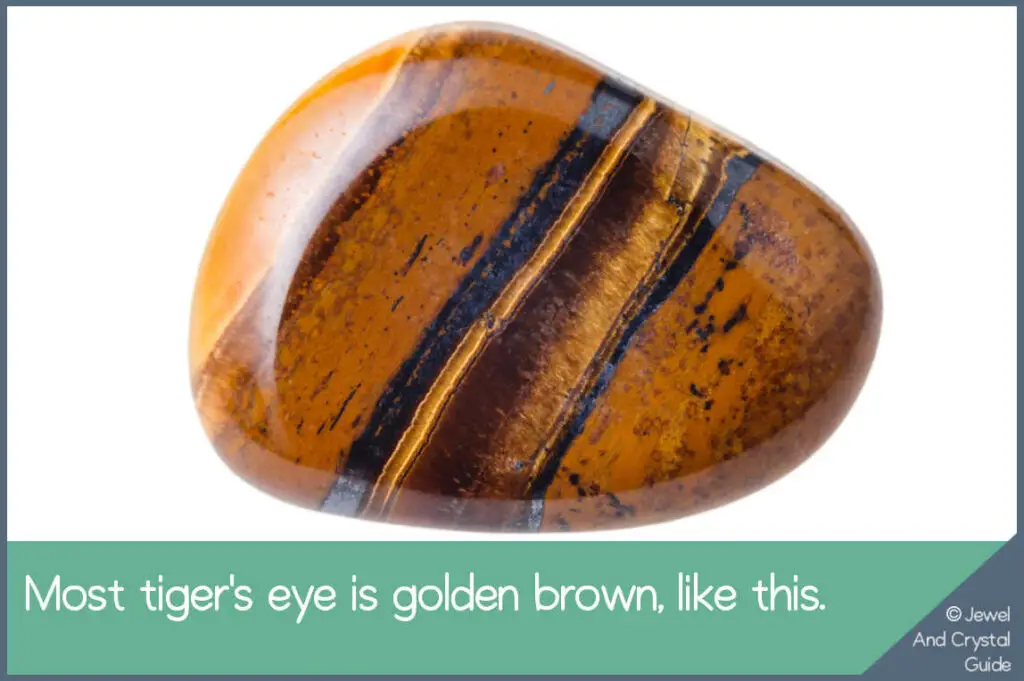
All tiger’s eye starts off as crocidolite, which changes over millions of years under the right conditions. You can read more about where tiger’s eye is found and how it’s formed in this blog post.
Different colors in tiger’s eye come from different minerals in the area and how they reacted when the crocidolite changed.
Golden tiger’s eye contains silica, iron oxide, and crocidolite fibers. And it’s these fibers that become golden-brown and black stripes in the final crystal.
Golden tiger’s eye is mainly found in South Africa, Australia, Brazil, and the United States.
This stone is believed to enhance willpower, confidence, clarity, and focus, as well as promote mental clarity and grounding.
Red tiger’s eye
Red tiger’s eye is a reddish-brown color because of iron oxide in the stone.
Red tiger’s eye is also known as ox eye, bull’s eye, dragon’s eye, and red tiger stone.

It is believed to have a stronger energy and grounding effect than the golden tiger’s eye, and promotes emotional balance, vitality, and motivation.
Click here for a list of signs that should wear tiger’s eye and why.
Red tiger’s eye is primarily found in South Africa.
Blue tiger’s eye
Blue is one of the rarest colors of tiger’s eye. It’s blue because it has less iron in it than golden and red tiger’s eye.
Blue tiger’s eye is also known as falcon’s eye and hawk’s eye. Falcon’s eye refers to the blue-gray variety, while Hawk’s eye refers to the dark blue variety with golden bands.

Blue tiger’s eye is used to enhance communication and clarity, calm tempers, increase psychic abilities and insight, and help with self-expression.
It is mostly found in South Africa and Western Australia.
Green tiger’s eye
Green tiger’s eye has shades of green in it, which are created by iron compounds in the quartz when it forms.
It’s believed that green tiger’s eye promotes emotional balance, harmony, and healing.
Green tiger’s eye is also called zebra serpentine.
Most green tiger’s eye is found in South Africa.
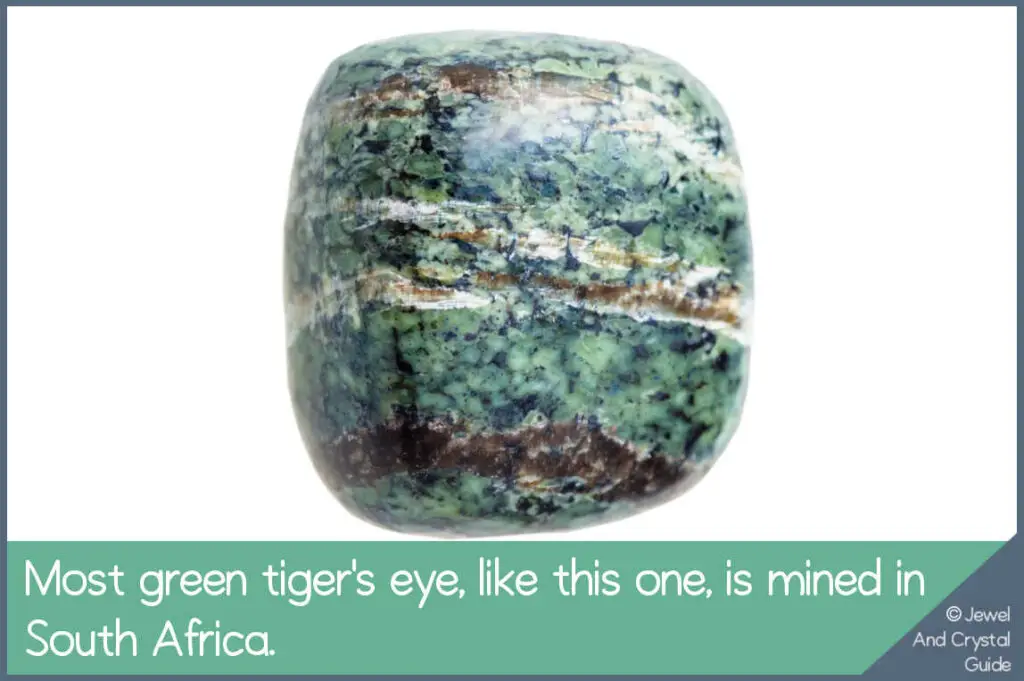
Black tiger’s eye
Black tiger’s eye is very rare.
It has black and dark brown bands in it. These bands form when iron oxide is oxidized more than usual, turning it a darker color than the golden-brown crystals.
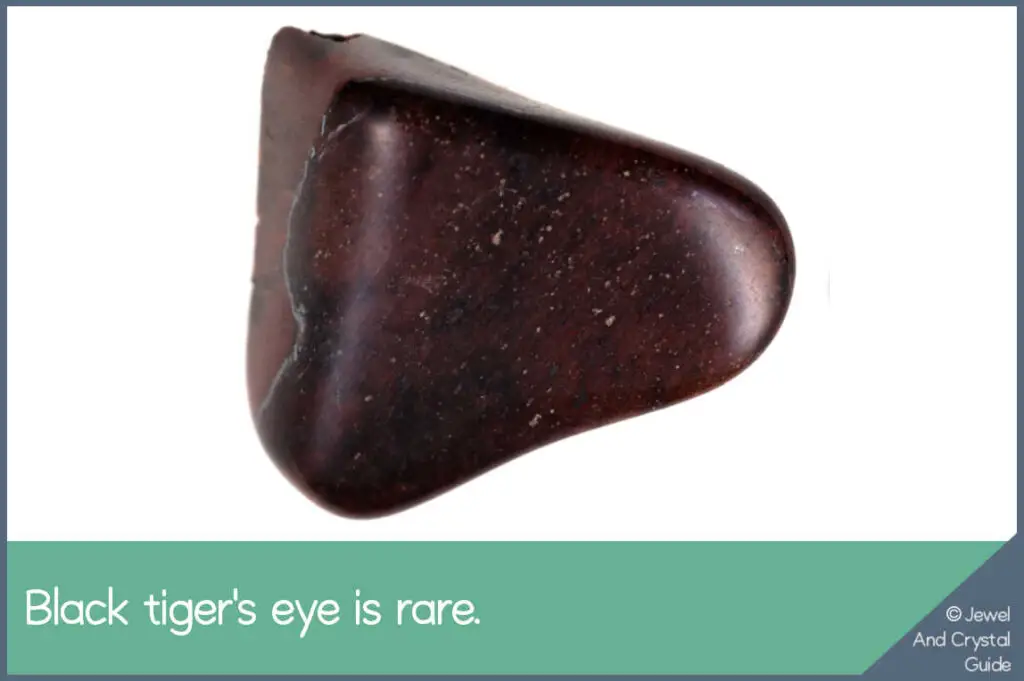
Black tiger’s eye is believed to have a strong protective energy, promoting courage, strength, and willpower.
It is primarily found in South Africa.
Is cat’s eye crystal the same as tiger’s eye?
Cat’s eye is not tiger’s eye.
These crystals come from different minerals, even though they are both chatoyant, which means they shine like a cat’s eyes in a light at night.
Tiger’s eye is quartz that started as crocidolite, which gives it a chatoyant effect. Pure cat’s eye, on the other hand, is a type of chrysoberyl that gets its chatoyant fibers from a mineral called rutile.
Some people call tiger’s eye “quartz cat’s eye“. When they do, they’re talking about tiger’s eye. Pure cat’s eye is never tiger’s eye.
I go into more detail about this in my guide to tiger’s eye here.










